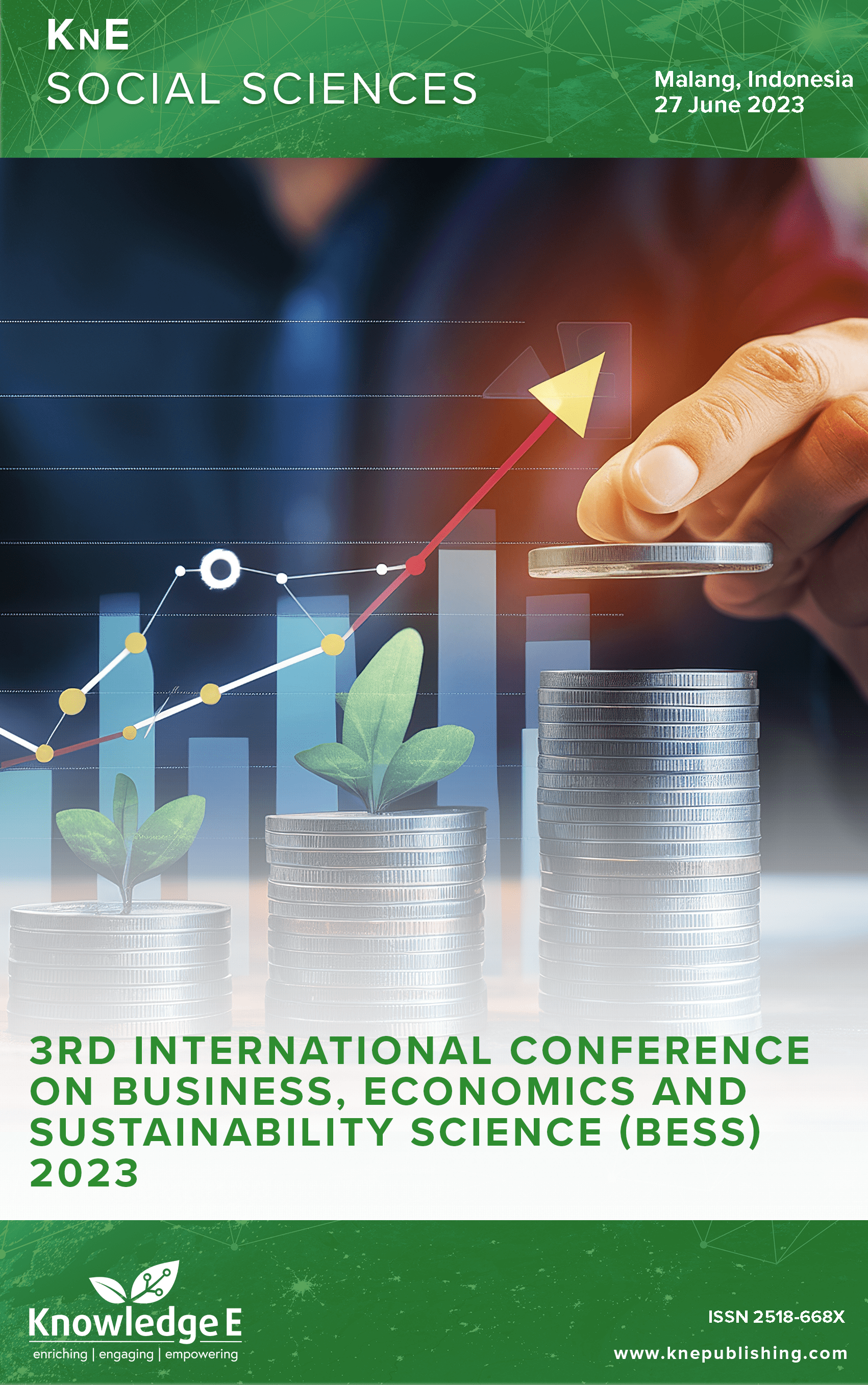Analysis of the Financial Banking Intermediary Function on Economic Growth and Poverty in East Kalimantan from 2011 to 2022
DOI:
https://doi.org/10.18502/kss.v9i21.16659Abstract
Banking intermediation in Indonesia is crucial because it directly affects economic growth to accommodate and channel capital from depositors to debtors to be used for production activities, encouraging economic growth in a region, in a certain period. The increase in economic growth caused by banking intermediation will directly or indirectly affect various aspects, one of which is the poverty rate. This paper aims to look at the effect of banking intermediation on economic growth directly and its effect on poverty levels both directly and indirectly through economic growth in East Kalimantan Province. The dataset used in this study comprises secondary time series data spanning from 2011 to 2022, sourced from the East Kalimantan Province’s BPS (Central Bureau of Statistics) and the Indonesian Financial Services Authority. To analyze these relationships, this study employed path analysis with SPSS 25. The findings of this research revealed that banking intermediation in East Kalimantan Province had a direct impact on economic growth in the same region. However, the relationship between banking intermediation and economic growth in East Kalimantan Province did not have a direct effect on poverty levels in the region. Instead, the influence of banking intermediation in East Kalimantan Province on poverty levels operates indirectly through its impact on economic growth.
Keywords: financial intermediary, economic growth, poverty
References
Agbada AO, Osuji CC. An empirical analysis of trends in financial intermediation and output in Nigeria. Glob J Manag Bus Res. 2013;13(9):19–30.
Aziakpono M. Financial development and economic growth in Southern Africa. Reducing Capital Cost in Southern Africa. 2005;1(1):137–67.
BPS – Statistics of Kalimantan Timur Province. (2011). Kalimantan TimurProvince in Figures.
BPS – Statistics of Kalimantan Timur Province. (2012). Kalimantan TimurProvince in Figures.
BPS – Statistics of Kalimantan Timur Province. (2013). Kalimantan TimurProvince in Figures. DOI: https://doi.org/10.1142/9789814504867_0016
BPS – Statistics of Kalimantan Timur Province. (2014). Kalimantan TimurProvince in Figures.
BPS – Statistics of Kalimantan Timur Province. (2015). Kalimantan TimurProvince in Figures.
BPS – Statistics of Kalimantan Timur Province. (2016). Kalimantan TimurProvince in Figures.
BPS – Statistics of Kalimantan Timur Province. (2017). Kalimantan TimurProvince in Figures.
BPS – Statistics of Kalimantan Timur Province. (2018). Kalimantan TimurProvince in Figures.
BPS – Statistics of Kalimantan Timur Province. (2019). Kalimantan TimurProvince in Figures.
BPS – Statistics of Kalimantan Timur Province. (2020). Kalimantan TimurProvince in Figures.
BPS – Statistics of Kalimantan Timur Province. (2021). Kalimantan TimurProvince in Figures.
BPS – Statistics of Kalimantan Timur Province. (2022). Kalimantan TimurProvince in Figures.
Camba AC, Camba AL. The dynamic relationship of domestic credit and stock market liquidity on the economic growth of the Philippines. Journal of Asian Finance. Economics and Business. 2020;7(1):37–46. DOI: https://doi.org/10.13106/jafeb.2020.vol7.no1.37
Cheyne C, O’Brien M, Belgrave M. Social policy in Aotearoa New Zealand: A critical introduction, Auckland: Oxford University Press, 1998.
Dendawijaya L. Manajemen Perbankan. Cetakan Ketiga. Ghalia Indonesia; 2014.
Ismail. Manajemen Perbankan. Prendamedia Group. 2010.
Hasibuan H, Malayu SP. Dasar-dasar Perbankan. Bumi Aksara; 2007.
Kasmir. Bank dan Lembaga Keuangan Lainnya. Edisi Revisi. PT. Raja Grafindo Persada. 2014.
Kasmir. Dasar-dasar Perbankan. Raja Grafindo Persada: Jakarta, 2014.
Kasmir. Analisis Laporan Keuangan, Raja Grafindo Persada. 2011.
Mark K Smith, dkk. Teori Pembelajaran dan Pengajaran: Mengukur Kesuksesan Anda dalam Proses Belajar Mengajar Bersama Psikolog Pendidikan Dunia. Mirza Media Pustaka. 2010.
Muljono TP. Analisa Laporan Keuangan untuk Perbankan. Bumi Aksara; 2006.
Rudy S, Indah P. Pengaruh Inflasi dan Pertumbuhan Ekonomi terhadap Kemiskinan di Indonesia [ JABE]. Journal of Applied Business and Economics. 2020;7(9):271–8. DOI: https://doi.org/10.30998/jabe.v7i2.7653
Saunders A, Garnet MM. Financial institutions management : A risk management approach (Sixth). International Edition. New York: McGraw-Hill; 2008.
Sulaiman LA, Aluko OA. Financial intermediation and economic growth: A test for causality in Nigeria. Banks and Bank System. 2015;10(4):69–74.
Thiel M. Finance and economic growth - a review of theory and the available evidence. Economic Paper. 2001;158.
Todaro, Michael P, Smith SC. Pembangunan ekonomi. Jakarta: Erlangga, 2006.
Rivai V. Credit Manajemen hand book. Jakarta: PT Raja Grafindo Persada; 2006.

